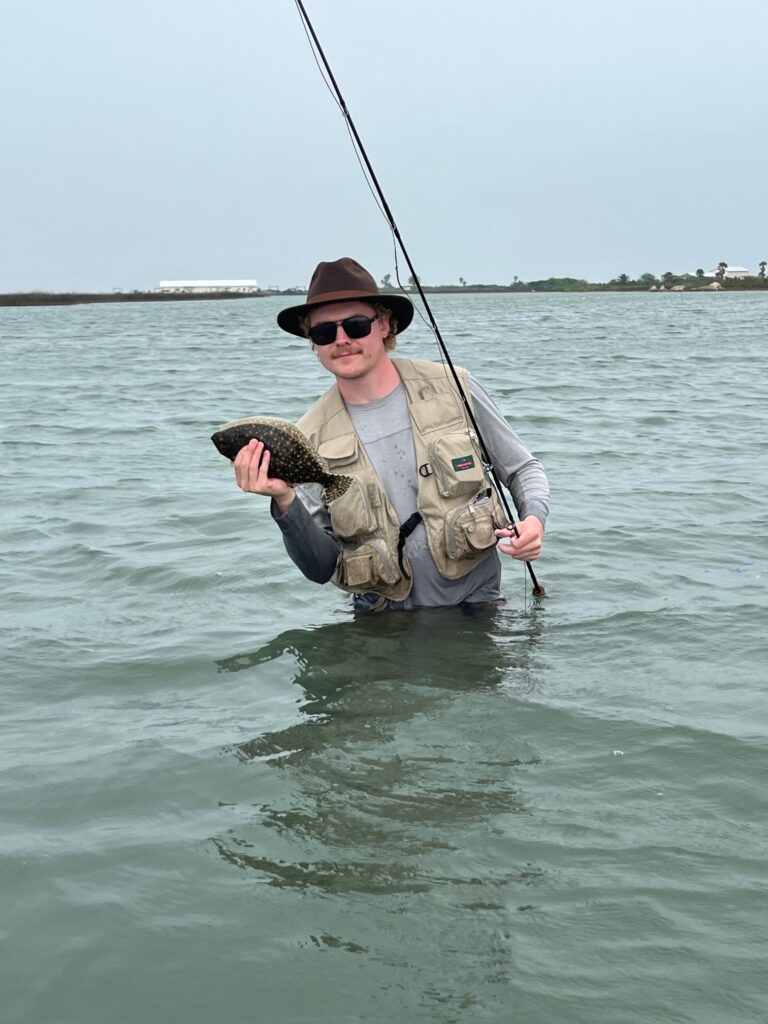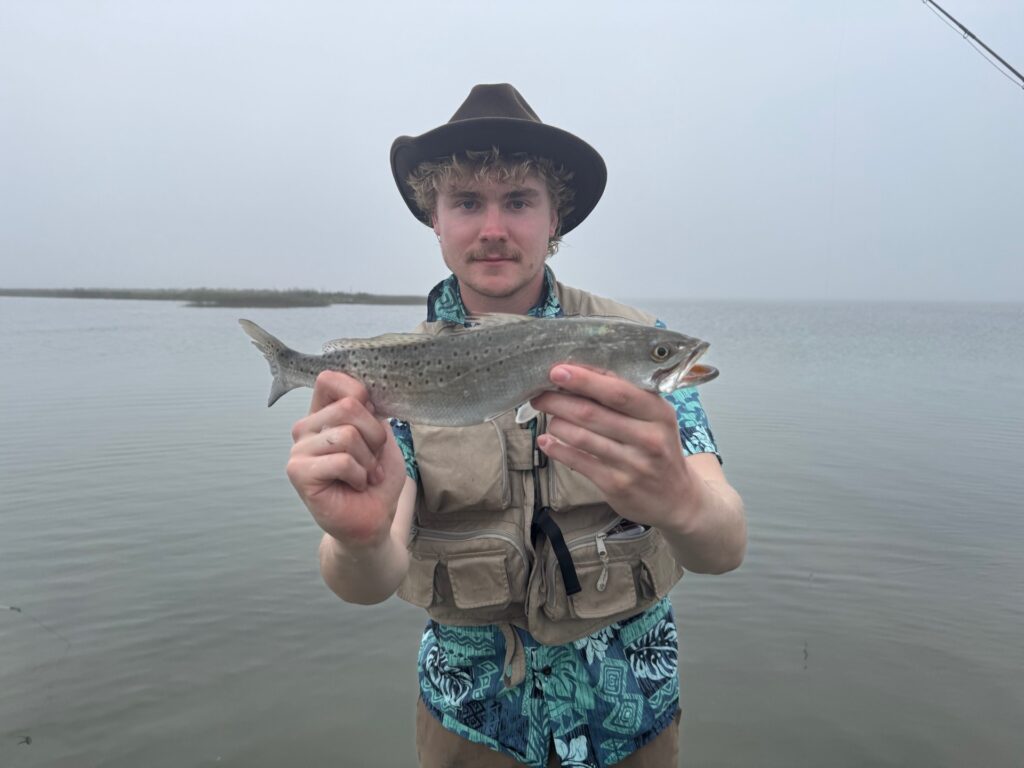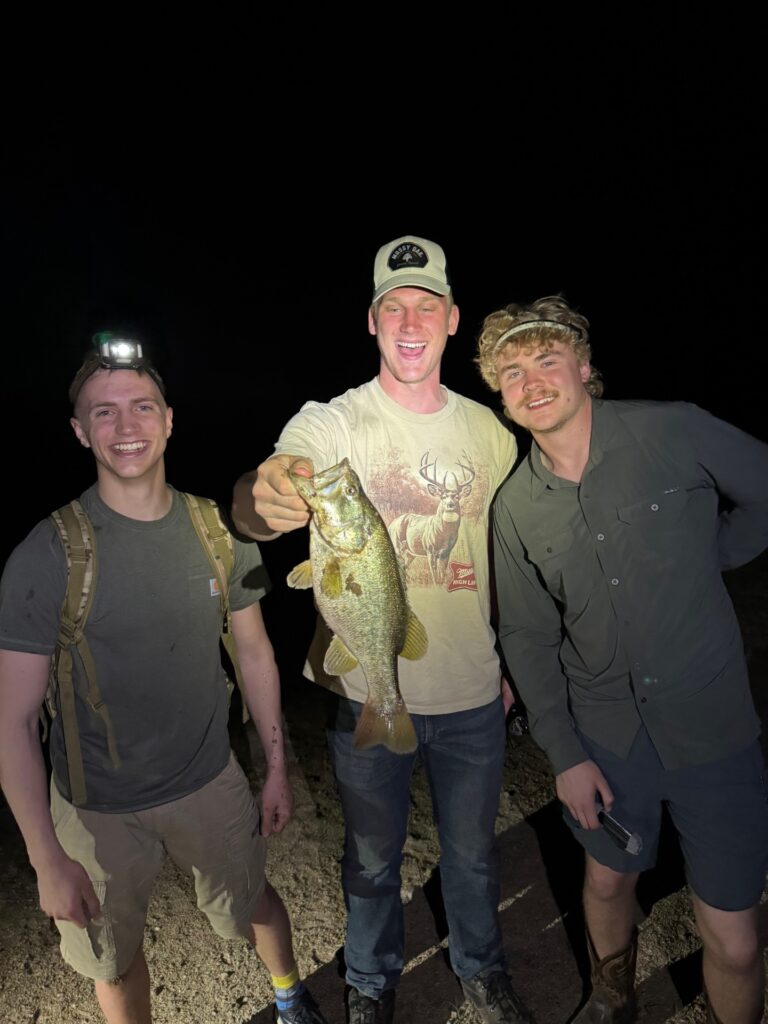Before embarking on this journey, I made a to do list. Scissor-Tailed flycatcher, Roseate Spoonbill, Scimitar Oryx, Redfish, and Speckled Sea trout. Now, I have a done list. What wasn’t on my list: Snake catching, Blue Crab boil, Barn Owl fly-bys, Black-Capped Vireos, White-Tailed hawk, Dolphins…I could go on for a while. The Texas wildlife was stunning, and the land was even prettier, but what really left an impact on me was the people. On the drive to and from Texas I got closer to my peers, and professors, learning about their journeys, mistakes and past experiences which led us all on this adventure. Upon arrival we met up with two Texans, Cooper and Steve. Steve is an engineer for NASA who drives a jetboat, and Cooper is a coastal dweller who gave me the rundown on fly fishing and birding Matagorda Island. Without their expertise, the learning curve of the Texas environment would have been far larger. After three days well spent, we said goodbye to Matagorda and traveled inland to Mason Mountain (WMA).

Mason Mountain is a hot, dry, reptile rich management area located in the Texas hill country that contains exotic African species such as the Gemsbok, and Scimitar Oryx. Upon arrival, we met our guides for the coming days, Mark and Austin. Mark has been running the show in Mason WMA for 30 years. He presented a slideshow on how Mason Mountain manages their wildlife, and specifically how the introduction of African game species benefits Texas. He answered any questions we had and cleared the air on any negative perception of the TP&W model. We then loaded into our vehicles and spent the afternoon exploring the WMA. Our day-lit tour brought sightings of birds, big game and the biggest catfish I have ever seen, but night brought various herps, arachnids and a showcase of Austin’s knowledge. It seemed any question we could think up was humbly answered with textbook accuracy. Later in our stay, I also found out Austin ties his own flies, a hobby that we both share. I hope to be as knowledgeable as him in my professional career. On our last day in Mason, we all met by the projector to listen to a man named Jeff. Jeff was a soft-spoken naturalist who enjoys photography. He offered me some tips and tricks that he has learned over the years, and an idea or two about how to get the sharpest image possible. Later that day we said our goodbyes and hit the road.

Our next destination was the place that I researched the most, South Llano State Park. After arriving too early to check in to the campground, we waited at the ranger station. This proved to be awesome timing because we added several new bird species for the trip, including a Vermilion flycatcher. We got the word it was time for check-in, but before we could even settle in for lunch a fishing rod appeared in my hand, and I was waist deep in the river. I started with a black/purple wooly bugger on a size 8 streamer hook, but after losing three fish I downsized to a size 10 white/pearl bead eyed marabou clouser. This landed me my first and only Guadalupe Bass. I caught a few more sunfish on the minnow pattern before switching to a size 16 ant dry fly. I caught small Long-Eared sunfish until the sun went down. I called it quits and headed back to the trailhead, but my friends and ride back to camp were nowhere to be found. With a dead cell phone, I figured I had only one option, but my lonely walk back to camp wasn’t lonely for long. Bats emerged from their dwellings, and I scared an owl off its perch. Along the trail I also spooked a group of coyotes and saw a Common poor-will flycatching in the moonlight. It was a tranquil end to our time in South Llano. The next morning, we all took a visit to the birding blinds and added a few more species, but our birdwatching was shrouded by the fact that our time in Texas was coming to a close.

After 26 hours of driving, sleeping and reflecting on our trip, we were back in the snow-covered Valley City. I’ll never forget Matagorda, Mason, Llano or the people and animals that call Texas home.